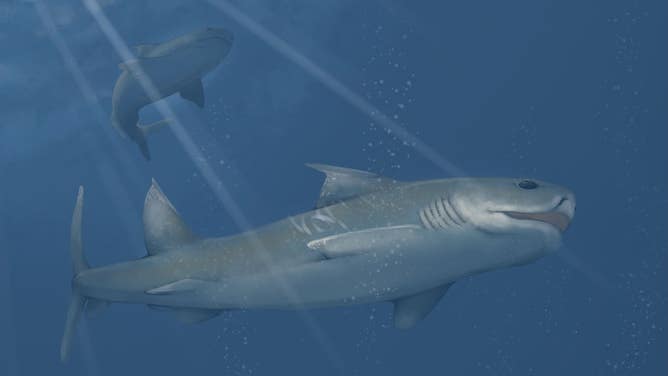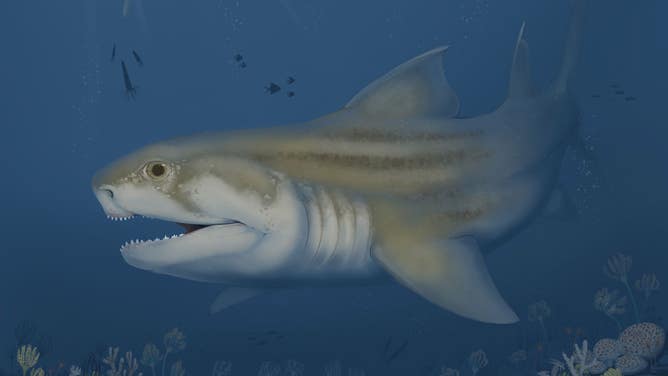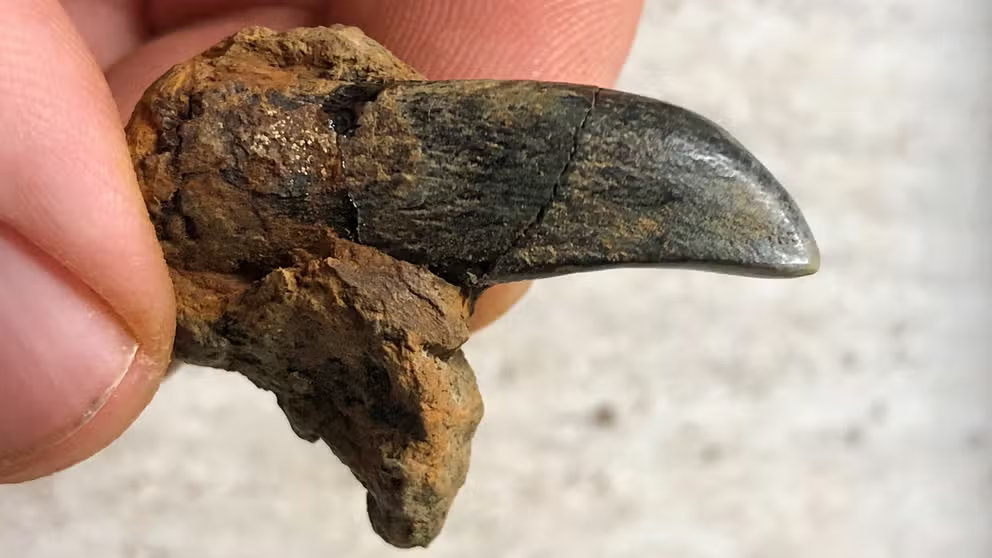Shark fossils from Alabama, Kentucky national park lead to discovery of new species
The discovery was made through the Paleontological Resources Inventory at Mammoth Cave National Park in southern Kentucky.
How kids at Dinosaur Park are finding bones with help from the rain
Located in Laurel, Maryland, Dinosaur Park is an outdoor laboratory where paleontologists, park visitors, and the weather combine forces to discover hundreds of fossils.
Two new-to-science shark species that lived more than 325 million years were discovered recently, the National Park Service announced on Thursday.
The discovery was made through the Paleontological Resources Inventory at Mammoth Cave National Park in southern Kentucky.
Using fossils collected at Mammoth Cave and in northern Alabama, PRI researchers identified the shark species Troglocladodus trimblei and Glikmanius careforum.

An illustration of two Troglocladodus trimblei.
(Benji Paynose / FOX Weather)
Troglocladodus trimblei is believed to have grown to about 10-12 feet long, or approximately the size of an oceanic whale tip shark, according to the NPS. It was identified by using adult and juvenile teeth.
MEGALODON SHARK TOOTH DISCOVERED BY 9-YEAR-OLD IN MARYLAND
Glikmanius careforum is believed to have been around the same size at 10-12 feet long, the NPS said. It was identified by using teeth found at Mammoth Cave and Alabama, along with a partial set of jaws and gills found at Mammoth Cave.

An illustration of Glikmanius careforum.
(Benji Paynose / FOX Weather)
Finding shark fossils in what are now landlocked areas may seem puzzling. However, the NPS said that Kentucky and Alabama were once covered by water, being part of an ancient seaway more than 325 million years ago.
NEW SPECIES OF ANCIENT SHARK IDENTIFIED AT NATIONAL PARK IN KENTUCKY
This seaway connected what is now eastern North America, Europe and northern Africa. This maritime passage eventually disappeared as all the continents merged to form the supercontinent Pangea, the NPS noted.
Because of this oceanic past, Troglocladodus trimblei and Glikmanius careforum are not the only ancient shark species to be identified in the region.
Mammoth Cave National Park officials announced in October the discovery of Strigilodus tollesonae, an extinct shark species more closely related to modern ratfish than to modern sharks and rays.



